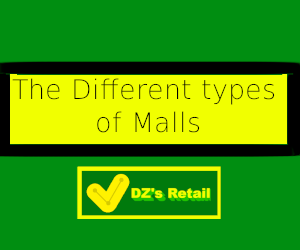Here’s a list of the different classes of malls. Some malls may not exactly fit theses descriptions, but for the most part cover the different types of indoor malls out there.
Community Malls: Smaller than B-Class malls, these malls are usually anchored by a grocery store (often a regional chain or discount grocer) and have mostly services and local stores and few national chain tenants. These are usually considered to be sub B-Class Malls or Dead Malls.
AAA-Class: Large, popular malls that have a lot of high end stores and little to no vacancies.
A-Class: Smaller than A-Class, but are otherwise the same. These malls may have more lower end chain stores.
B-Class: Malls with average stores and a 1-5% vacancy rate. These usually have high traffic, but not as much as A-Class malls. There are usually mainly national chains with only one anchor vacancy, usually a former Sears or Target. These malls tend to have more local shops than A-Class
C-Class: Malls with a moderate vacancy rate between >30% and <70% vacancy rate. May have up to 2 anchors vacant. Most stores are local chains of low quality. This tier is for malls that are dying, but don’t qualify as being dead malls.
Dead Mall: A mall with a more than 80% vacancy and with very few stores left. The only anchor left is usually a struggling department store chain such as Sears. These malls tend to be not maintained very well.
Until next post, DZ


Comments
Post a Comment
RULES: Comments are subject to approval before showing up. Please stay on topic and be civil.